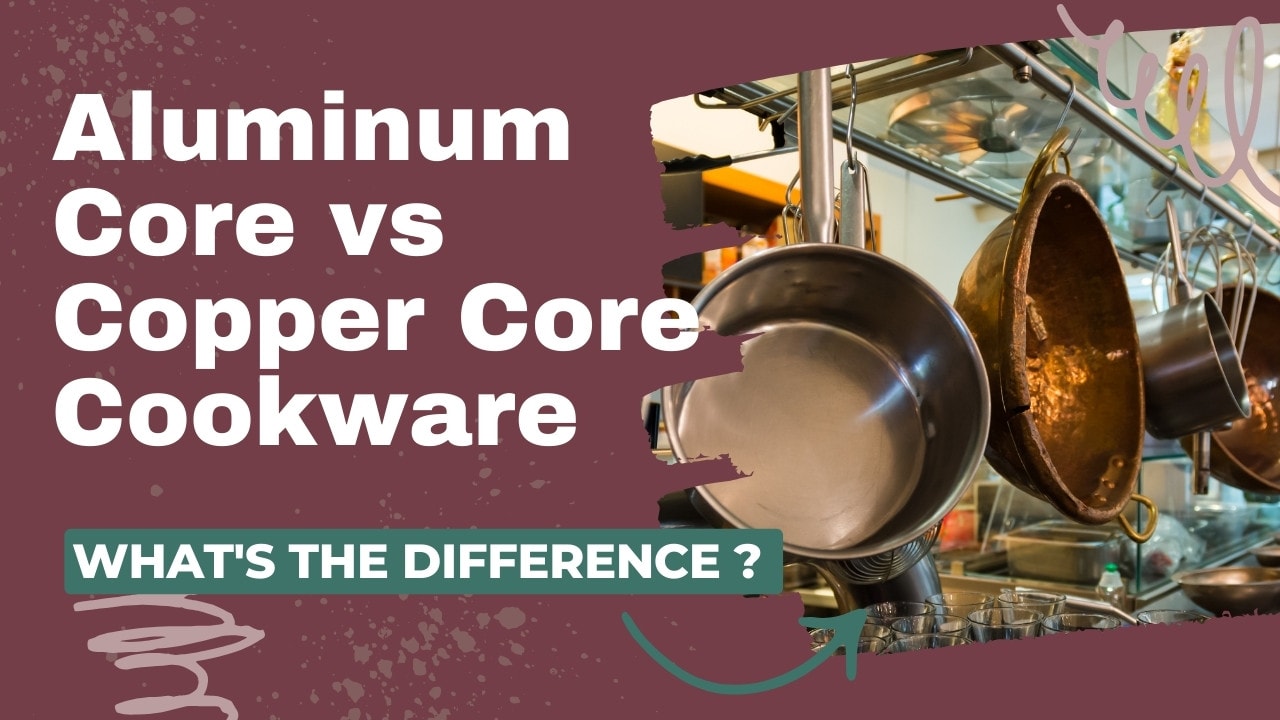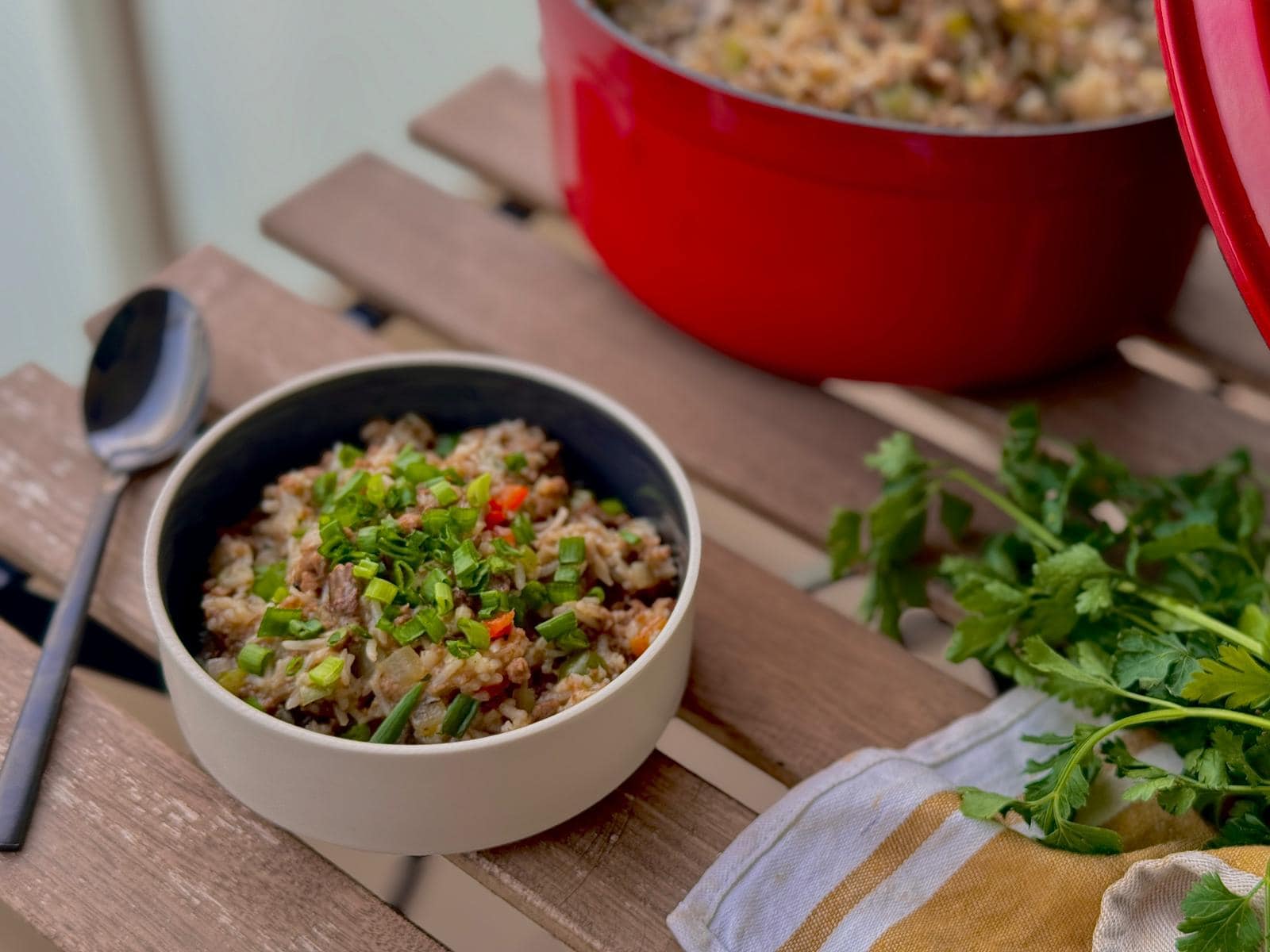Stainless steel cookware is a staple of modern kitchens. It’s durable, sleek, and versatile. But if you’re making the switch to stainless steel, the range of product options can be a lot to sort through!
There are impact-bonded, 3-ply, and 5-ply stainless steel pots and pans. You can find aluminum or copper cores, each promising the best results. Are these bells and whistles just gimmicks, or do they really make a difference?
In this article, we’ll talk about:
We’ll discuss the pros and cons of each of these types of cookware to help you make more informed decisions.
Is Aluminum or Copper Core Cookware Better?
Aluminum-core stainless steel cookware is most popular, since it offers even heat distribution at a much lower price than copper-core cookware. Copper-core stainless steel heats up quickly and evenly, but the benefits may not be noticeable or important for many home chefs.
Aluminum Core
Pros
Cons
Copper Core
Pros
Cons
What is Aluminum Core or Copper Core Stainless Steel Cookware?
Stainless steel cookware isn’t made of pure stainless steel, mainly because steel doesn’t conduct heat well despite its impressive weight and durability.
This is where aluminum or copper core stainless steel cookware comes in. Copper and aluminum are excellent heat conductors, but they’re soft and way less durable than stainless steel. So, manufacturers place a layer of aluminum or copper between two stainless steel layers to improve heat conductivity and remove hot spots.
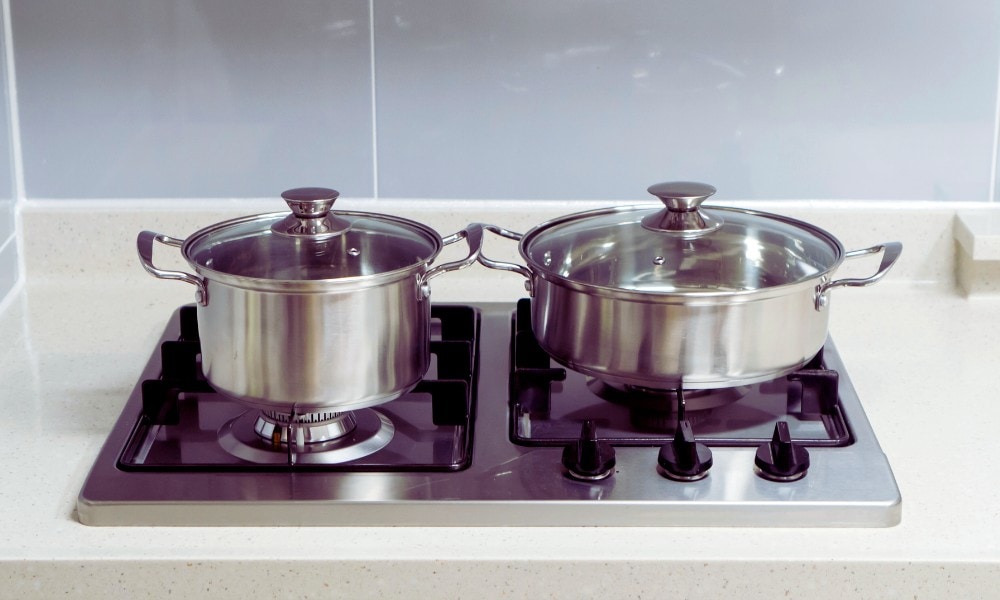
The inner and outer stainless steel layers act as a barrier between the food and the core layers, improving the strength, corrosion resistance, and safety of the cookware.
A layered combination of these metals takes advantage of the benefits of both and compensates for the others’ drawbacks.
Impact-bonded vs. Clad Stainless Steel
Manufacturers use conductive metals in stainless steel cookware in two different ways.
Impact-bonded cookware has a thick aluminum disc pressed onto the outer bottom of the vessel. These pots and pans only have improved heat conductivity at the bottom and not their walls.
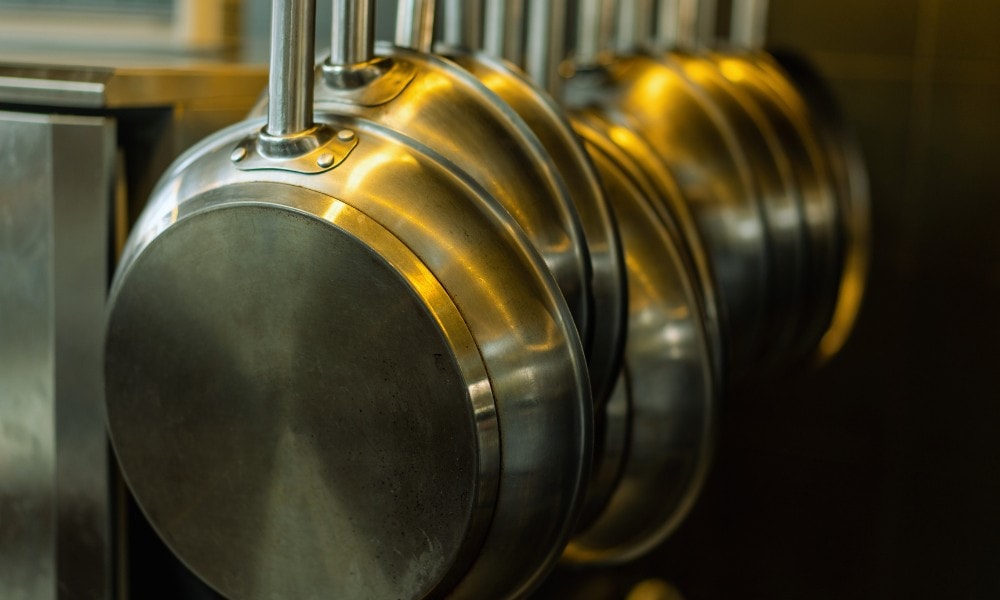
On the other hand, clad cookware has this layered structure in the entire vessel. The cookware can consist of three or five layers—aka, 3-ply or 5-ply, respectively. This creates thermal conductivity all around the vessel, and not just the bottom.
How do Aluminum and Copper Compare?
Aluminum and copper are both great heat conductors, a property that makes them excellent for multi-ply stainless steel cookware. However, their differences outweigh their similarities.
The most important difference is heat conductivity. Although both are conductive, copper takes the crown. Copper is the third most conductive material behind diamond and silver. Aluminum comes sixth in the list of most conductive materials.
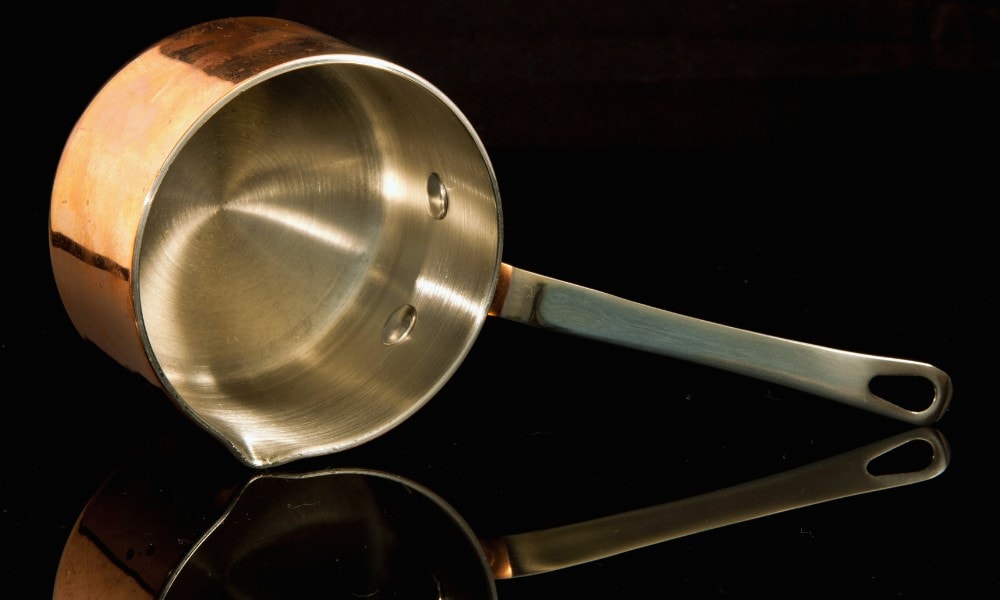
Thermal conductivity is measured in W/m.k ( Watts per meter per kelvin) in the International system on Units (SI). Copper’s heat conductivity is 398 W/m.k, while it’s 247 W/m.k for aluminum. So, aluminum has 60% of copper’s conductivity. That means you need a thinner layer of copper to achieve the same conductivity as aluminum. Still, aluminum is used in clad stainless steel cookware more frequently. Here are some facts about aluminum and copper in cookware.
Pros and Cons of Copper and Aluminum Cores
Aluminum and copper bring their benefits to 3-ply and 5-ply stainless steel cookware. Still, they have drawbacks that make them unfit for specific applications. Let’s review their pros and cons.
Copper Core Pros
The most significant benefit of copper cores is superb heat conductivity. This property makes it highly responsive. The faster a metal transfers heat, the more effectively it can respond to thermal changes. This is an essential property for cooking delicate proteins —-like fish— and sauces, which need to cool down quickly when they reach a specific cooking stage.
Another benefit is copper’s high density. So, you can achieve great conductivity with a thin layer. This makes cookware less bulky and lighter than aluminum.
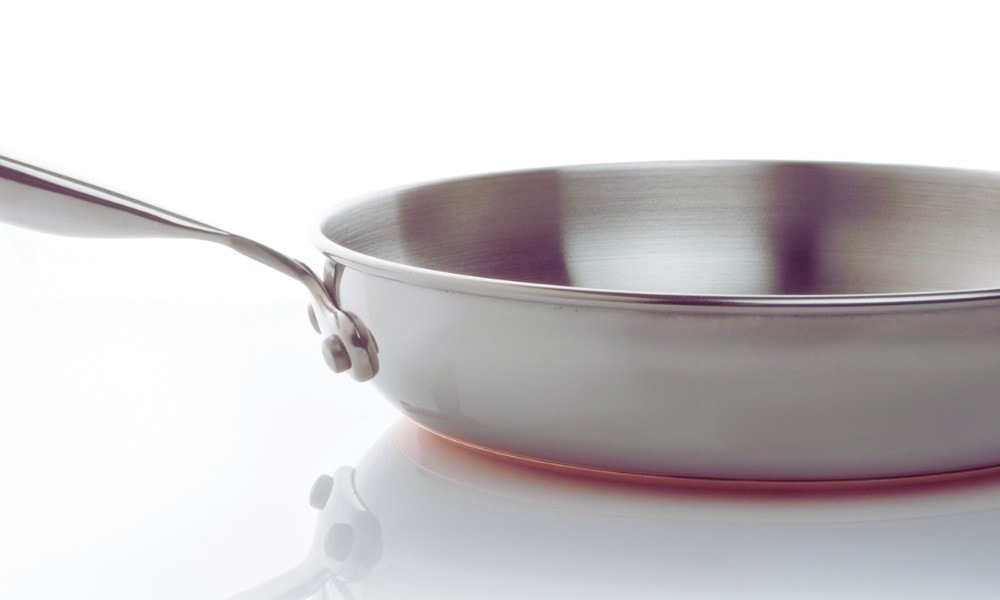
Copper Core Cons
After a quick search in multi-ply stainless steel cookware, you’ll see that there are only a few copper core options available. The main reason is its higher costs. Most home chefs don’t sense copper’s superior performance and can do most of their cooking using aluminum-core cookware. So, a copper core is kind of an overkill.
Another downside of copper is its poor heat retention. Thermal responsiveness and heat retention are opposite qualities. If a metal is highly responsive, it has lower heat retention capabilities.
Cookware with high heat retention shouldn’t be responsive to heat changes. Heat retention comes in handy when cooking steaks. So, that would make your copper-core stainless steel pan pointless because you can’t take advantage of its biggest benefit, responsiveness.
Related: Best Copper Cookware Sets of 2024
Aluminum Core Pros
The biggest upside of aluminum is its lower price. That’s why manufacturers use it generously in their multi-ply cookware. They also use it as a bonding agent between the layers.
Most manufacturers use a thick aluminum core sandwiched between two stainless steel outer layers. They use two thinner, lower-quality aluminum sheets to bond the core to the stainless steel layers.
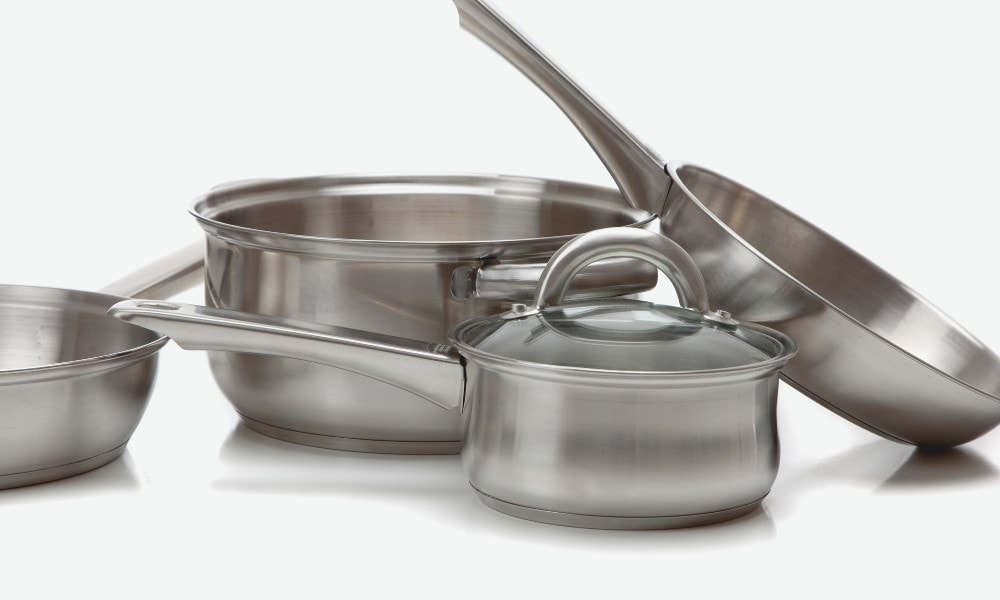
Aluminum Core Cons
Aluminum’s lower cost and widespread availability make up for its downsides. It’s less conductive than copper. However, manufacturers can make it thicker. And since it’s four times less expensive than copper, making the core thicker doesn’t drive up the cost.
Should I Buy Aluminum or Copper Core Cookware?
Aluminum core cookware is more popular among home chefs because it can deliver similar results to copper but costs less.
If you use multi-ply stainless steel cookware for regular home cooking, you won’t notice much difference between the two. Unless you need a highly responsive pan for making delicate sauces, you’ll be fine with a decent-quality aluminum-core pan for every other cooking method.

For cooking stews and soups or boiling water, a pot with great heat retention is better than a responsive one. In such cases, the cookware’s thickness is more important than the number of plies or the metals used. The thicker the cookware, the higher the heat retention. Either of these fully clad options will perform much better for this purpose than an impact bonded pan.
If you’re concerned about food safety, both options are fine since they’re covered with stainless steel. It takes considerable damage for the core metal to become exposed and leach into your food.

If you want to enjoy copper’s outstanding qualities, skip the products sold as “copper core stainless steel” and go for full-on copper cookware. It has an outer copper layer lined with stainless steel or tin to prevent copper from leaching into your food. When copper is in direct contact with the heat source, like in traditional copper pans—-unlike stainless steel cookware with copper core—you can feel its superiority over other metals.
Best Aluminum Core Stainless Steel Cookware Set: Cuisinart 12 Piece Cookware Set
Set includes: 8" skillet, 10" skillet,1.5-qt saucepan with lid, 3-qt saucepan with lid, 3.5-qt sauté pan with helper handle and lid, 8-qt stockpot with lid, 20cm steamer insert with cover.
If you want a complete set for your kitchen at a reasonable price, this 12-piece set is your best bet.
The pots and pans are 2.6 mm thick, so you’ll get excellent heat retention. The 18/10 stainless steel is tough and corrosion-resistant, allowing you to abuse it while standing the test of time. Plus, the aluminum core offers smooth heating without hotspots.
The gorgeous outer layer is brushed stainless steel. It’s also dishwasher-safe and becomes nonstick if you heat it at the right temperature.
Quick Overview:
Pros
Cons
Best Copper Core Stainless Steel Cookware Set: All-Clad Copper Core Cookware
Set Includes: 8” and 10” fry pans, 2 and 3-qt saucepans with lids, 3-qt saute pan with lid, 8-quart stockpot with lid.
When it comes to copper-core stainless steel, All-Clad is the ultimate choice. The 5-ply construction features a copper core bonded to the stainless steel outer layers with two aluminum sheets. This construction gives the cookware enough thickness to retain heat well and enough conductive metals to make it responsive.
The brushed stainless steel exterior and the elegant copper ring give it a sleek and gorgeous look.
The handles may feel weird for some, though. The angles aren’t comfortable, making the pots and pans feel heavier.
Quick Overview:
Pros
Cons
Find More: Best Stainless Steel Cookware Sets Without Aluminum
Conclusion
Copper and aluminum-core cookware are both great at offsetting stainless steel’s shortcomings. They can give it great heat conduction to make it suitable for cooking. Aluminum can offer these benefits at a much lower price because it’s cheaper and more available. If you want to reap the benefits of copper in your kitchen, go for products sold as “copper cookware” that are lined with stainless steel.
Don’t hesitate to share your comments about copper or aluminum core cookware.

